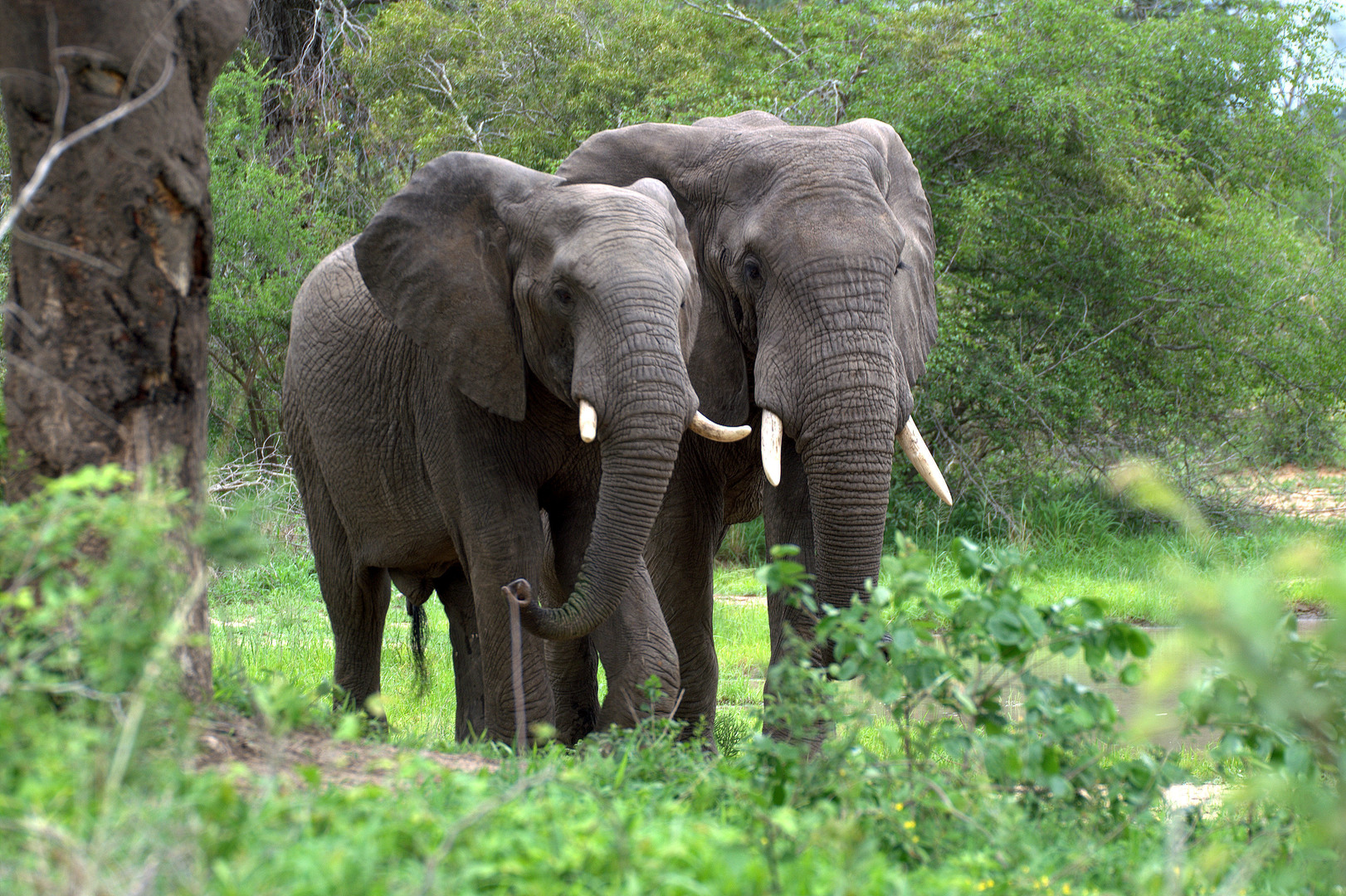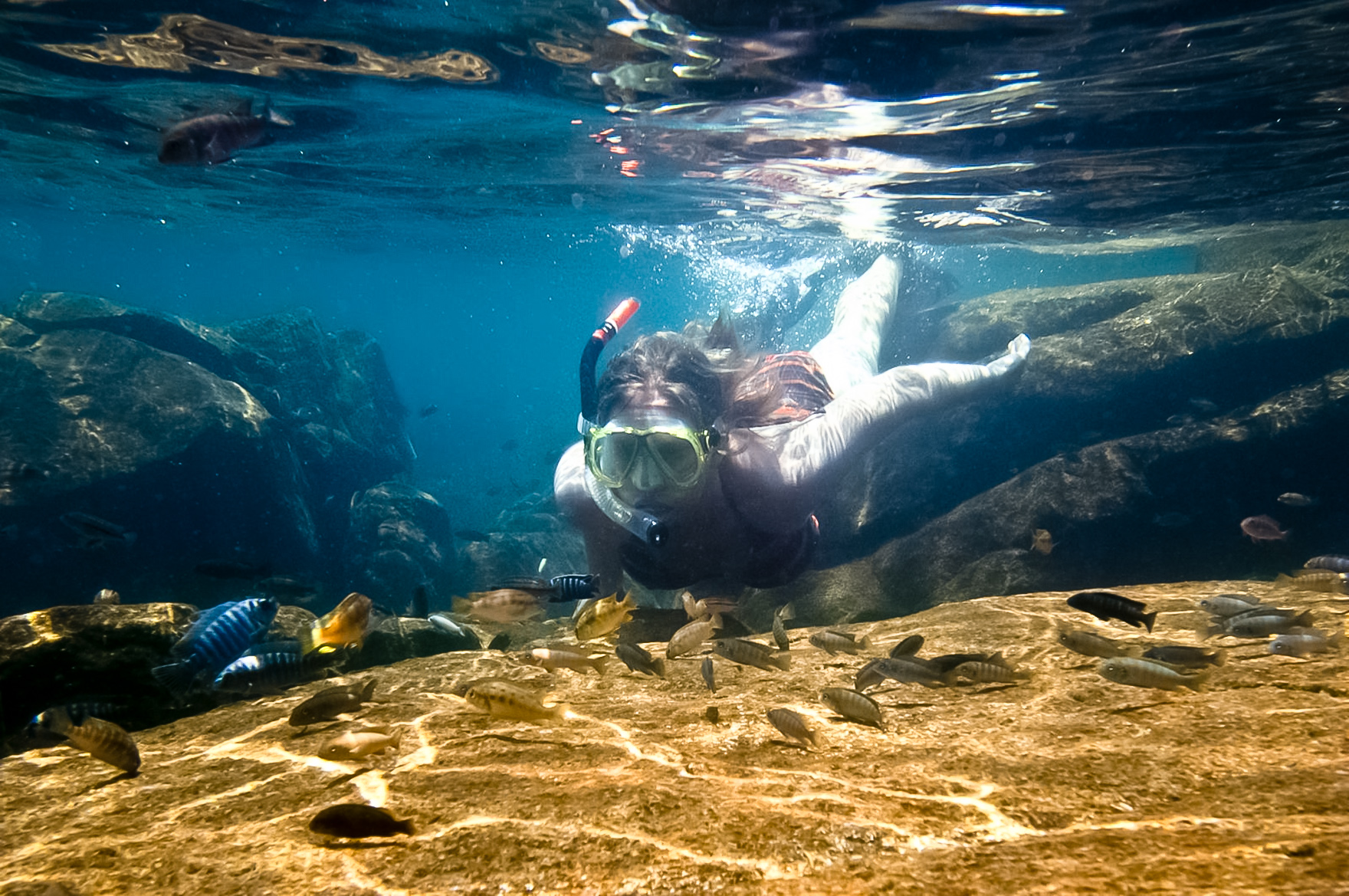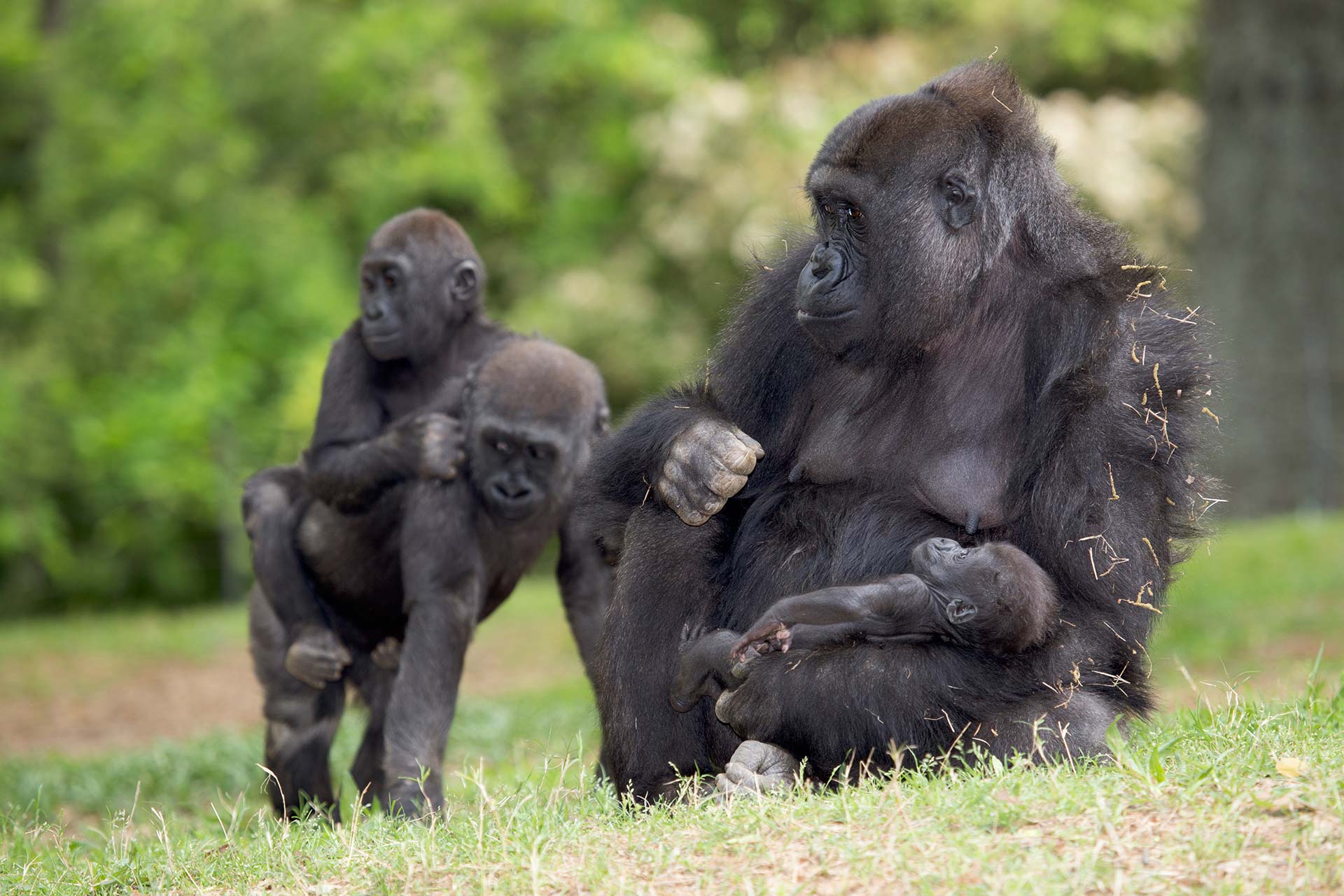AFRICA’S UNUSUAL FIVE
Africa certainly isn’t short of memorable wildlife sightings, but look beyond the obvious and you’ll discover a continent packed full of fantastic fauna waiting to be photographed.
African Forest Elephants

While the dust-raising spectacle of a full-grown, ear-flapping loxodonta africana is certainly a sight to add to your bucket list, the smaller, quieter cousin of the African elephant is equally worth a look. The African forest elephant – loxodonta cyclotis – has tusks that point downwards to help negotiate deep undergrowth. They are found throughout the rainforests of the Congo Basin, with populations in Gabon, Republic of Congo, Democratic Republic of Congo (DRC) and Cameroon in central Africa, as well as the likes of Côte d’Ivoire, Liberia and Ghana in West Africa. One of the best places to see African forest elephants is Lango Camp in Congo’s Odzala- Kokoua National Park.
Cichlids of Lake Malawi

There’s world-class scuba diving to be had on Africa’s coral reefs, but some of the most enchanting underwater scenes are to be found hundreds of kilometres from the ocean. While cichlids are found in lakes across East Africa, it’s the (usually) calm waters and shoreside hotels of Lake Malawi that bring snorkelers and divers in from across the world. Africa’s third-largest lake is home to hundreds of species of cichlid, many of whom are endemic to the waters here. Island retreats and lakeshore lodges are strung out along much of the western shore, offering snorkelling excursions and scuba diving as an excellent way to discover these colourful inhabitants. However, the lake is not without its threats, thanks to overfishing and a hungry aquarium trade that sees wild fish caught and exported to overseas markets.
Madagascar’s Leaping Lemurs

The island of Madagascar has long been seen as something of an evolutionary oddity, with its fauna and flora a world apart from those on continental Africa just a few hundred kilometres to the west. Few island residents are quite as unique as the striking lemurs of the ‘red island’. There are upwards of 100 different species of lemurs on Madagascar, all of which are endemic to the island.
Ranomafana National Park in the central highlands is an excellent option for a good lock, with 20 different species of lemur to be seen, including the rare, red-bellied lemur. Another popular choice is Berenty in the south. Easily reached from the coastal town of Taolagnaro (previously known as Fort Dauphin), this private reserve is home to hundreds of friendly ring-tailed lemurs alongside a sizeable population of quirky Verraux’s sifakas.
Western Lowland Gorillas

Don’t fancy the lung-busting climb up muddy slopes to meet mountain gorillas? In the Ndzehe concession on the boundary of Congo’s Odzala-Kokoua National Park, Ngaga Camp offers a remarkable opportunity to discover the lesser-known western lowland gorilla.
Although it’s the most widespread of gorilla subspecies, few travellers venture into the forests of the Congo basin to discover these smaller, browner relations of their mountain-dwelling cousins.
Ngaga Camp is situated within the territory of a number of gorilla groups, of which two families have been habituated for gorilla trekking. The local trackers and lodge guides are superb, bringing the entire forest ecosystem to life on daily walks to track the gorilla families. Wild chimpanzees are also resident in the area, although seldom seen. What’s more, the recent introduction of a third weekly flight from Odzala-Kokoua National Park to Brazzaville has made accessing the gorilla treks of Ngaga Camp that much easier.
Dugongs in Bazaruto

The seas around Mozambique’s Bazaruto Archipelago teem with marine life – they’re a paradise on earth for scuba diving and deep-sea fishing; and for centuries, these seas have supported the fishermen on their traditional dhows. Though centuries of (over-) fishing have taken their toll, the dugong is both the icon of these seas and its most elusive resident. The archipelago is home to the last viable population of dugong in the western Indian Ocean, although these ungainly ‘sea cows’ once ranged from the Seychelles to Réunion. While sightings are far from guaranteed, scuba divers and snorkelers are often fortunate to observe these lithe sea mammals grazing on the sea grasses growing in the warm water shallows.











